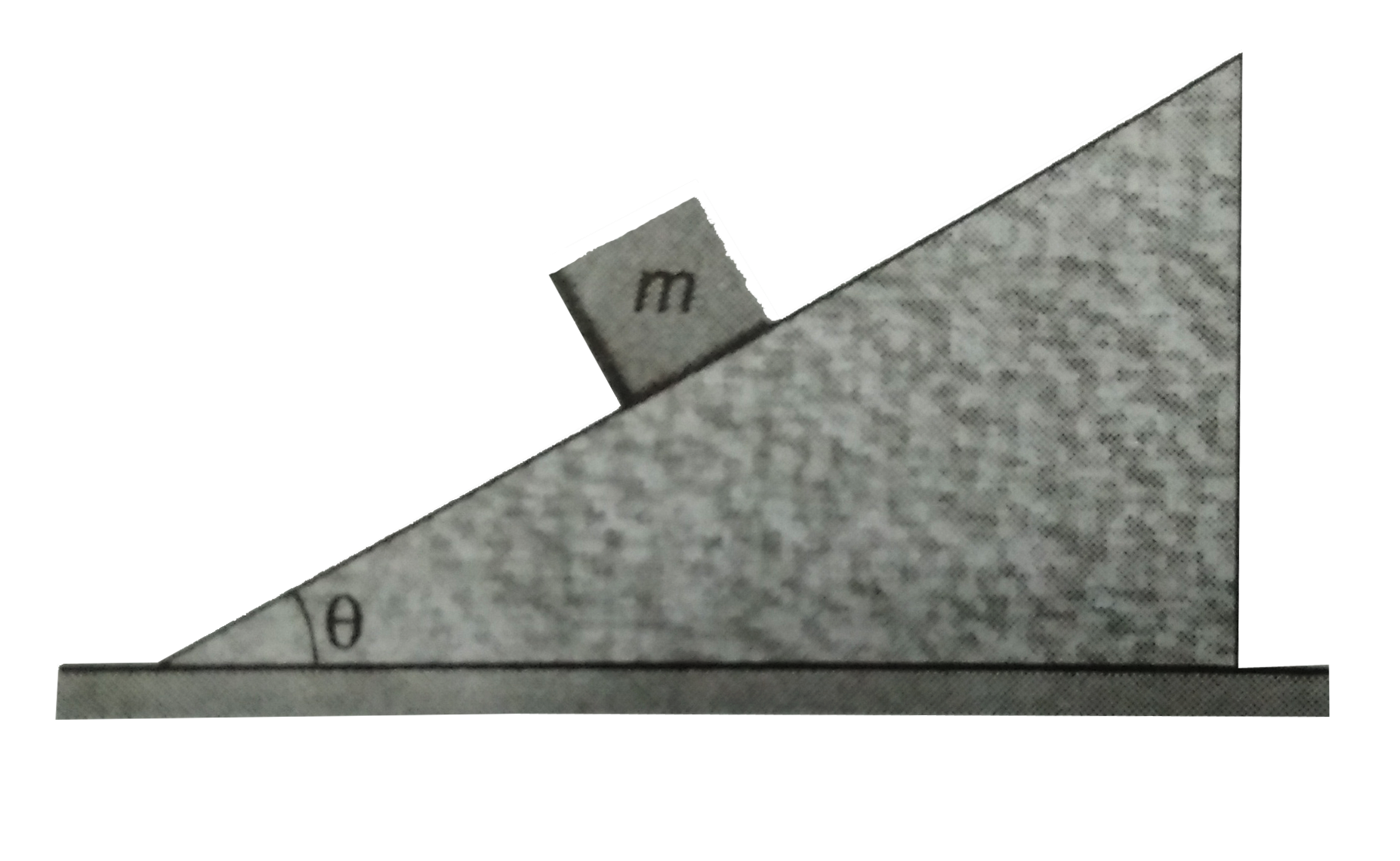A block of mass m1 lies on top of fixed wedge as shown in figure 1 and another block of mass m2 lies on top of wedge which is free to move as shown in figure 2. At time t=0, both the blocks are released from rest from a vertical height h above the respective horizontal surface on which the wedge is palced as shown. There is no friction betwen block and wedge in both the figures. Let T1 and T2 be the time taken by block in figure 1 and block in figure 2 respectively to just reach the horizontal surface then: 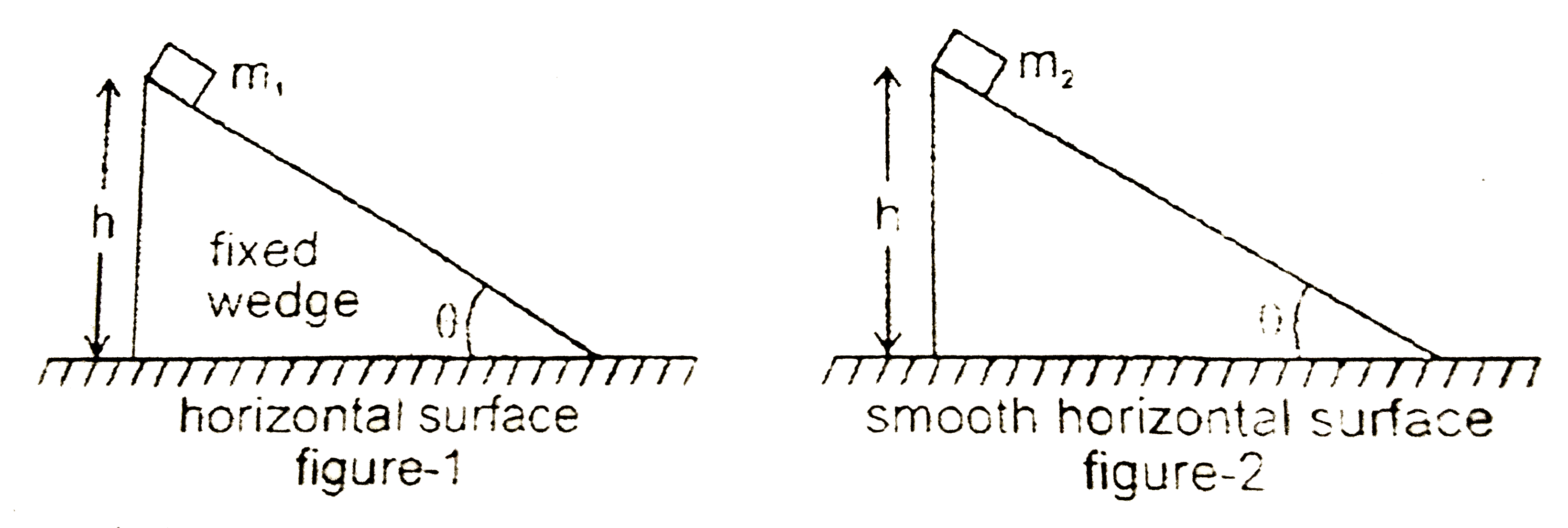
T1>T2
T1<T2
v1>v2
v1<v2
The correct Answer is:A, B
If there had been no friction then the acceleration of 3 kg and 2 kg should have been 2m/s2 and 3m/s2. So 2kg block tends to move fast, hence friction acts left on 2kg and right on 3kg.
Topper's Solved these Questions
Similar Questions
Knowledge Check
- Question 1 - Select One
A block of mass m1 lies on the top of fixed wedge as shown in fig. and another block of mass m2 lies on top of wedge which is free to move as shown in fig. At time t=0 both the blocks are released from rest from a vertical height h above the respective horizontal surface on which the wedge is placed as shown. There is no friction between block and wedge in both the figures. Let T1 and T2 be the time taken by the blocks respectively to just reach the horizontal surface. then
 AT1>T2BT1<T2CT1=T2DData insufficient
AT1>T2BT1<T2CT1=T2DData insufficient - Question 2 - Select One
A cube of mass m is placed on top of a wedge of mass 2m, as shown in figure. There is no friction between the cube and the wedge. The minimum co - efficient of friction between the wedge and the horizontal surface, so that the wedge does not move is
 A0.1B0.2C0.3D1√2
A0.1B0.2C0.3D1√2 - Question 3 - Select One
A block of mass m rests on a stationary wedge of mass M. The wedge can slide freely on a smooth horizontal surface as shown in figure. If the block starts from rest
 A(a) the position of the centre of mass of the system will changeB(b) the position of centre of mass of the system will change along the vertical but not along the horizontalC(c) the total energy of the system will remain constantD(d) All of the above
A(a) the position of the centre of mass of the system will changeB(b) the position of centre of mass of the system will change along the vertical but not along the horizontalC(c) the total energy of the system will remain constantD(d) All of the above
A block of mass m, is kept on a wedge of mass M, as shown in figure such that mass m remains stationary w.r.t. wedge. The magnitude of force P is
 View Solution
View SolutionA block of mass m is at rest over the rough surface of the fixed wedge.
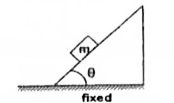
 View Solution
View SolutionA wedge with mass M rests on a frictionless horizontal surface A block with mass m is placed on the wedge. There is no friction between the block and the wedge. A horizontal force f is applied to the wedge. What magnitude F must have if the block is to remain at constant height above the table top?
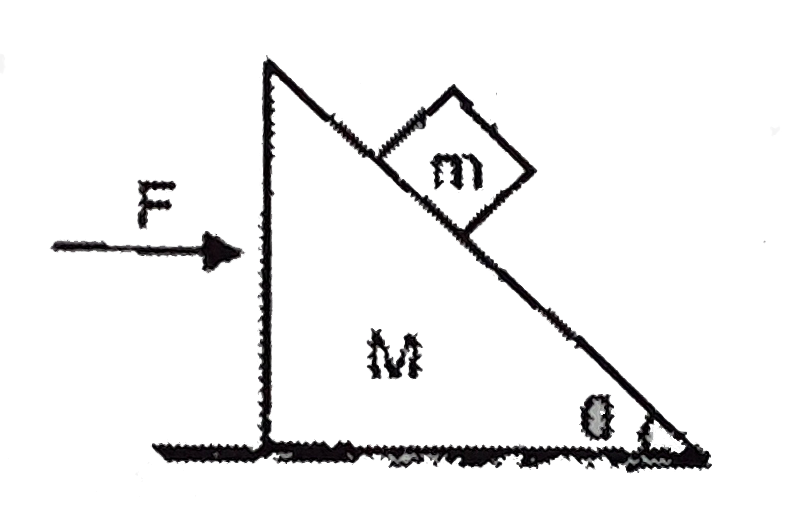 View Solution
View SolutionA triangular wedge is placed on smooth horizontal surface. A block is placed on wedge as shown in the figure. Coefficient of friction between block and wedge is μ. Initially system reamins at rest.
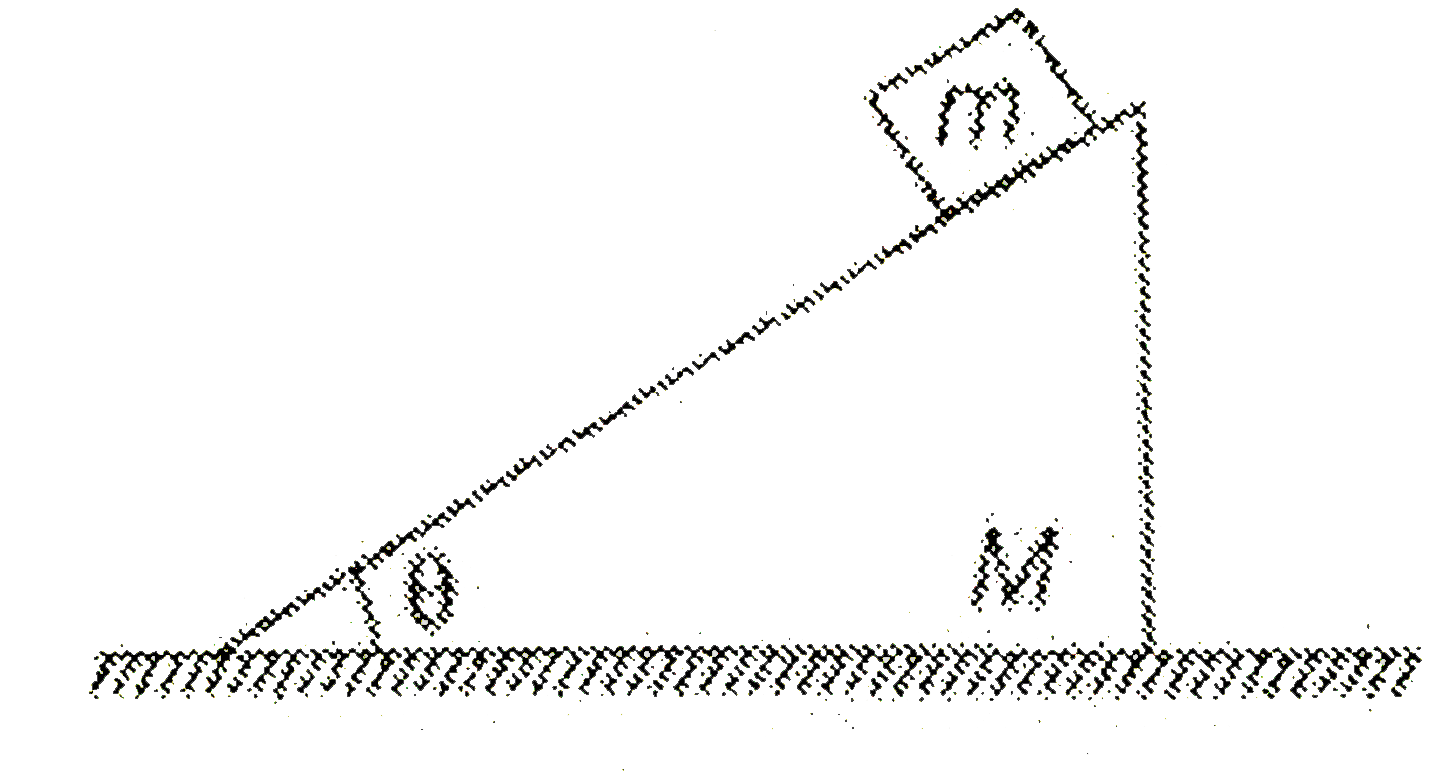 View Solution
View SolutionA smooth block of mass m is held stationary on a smooth wedge of mass M and inclination θ as shown in figure .If the system is released from rest , then the normal reaction between the block and the wedge is
 View Solution
View Solution


